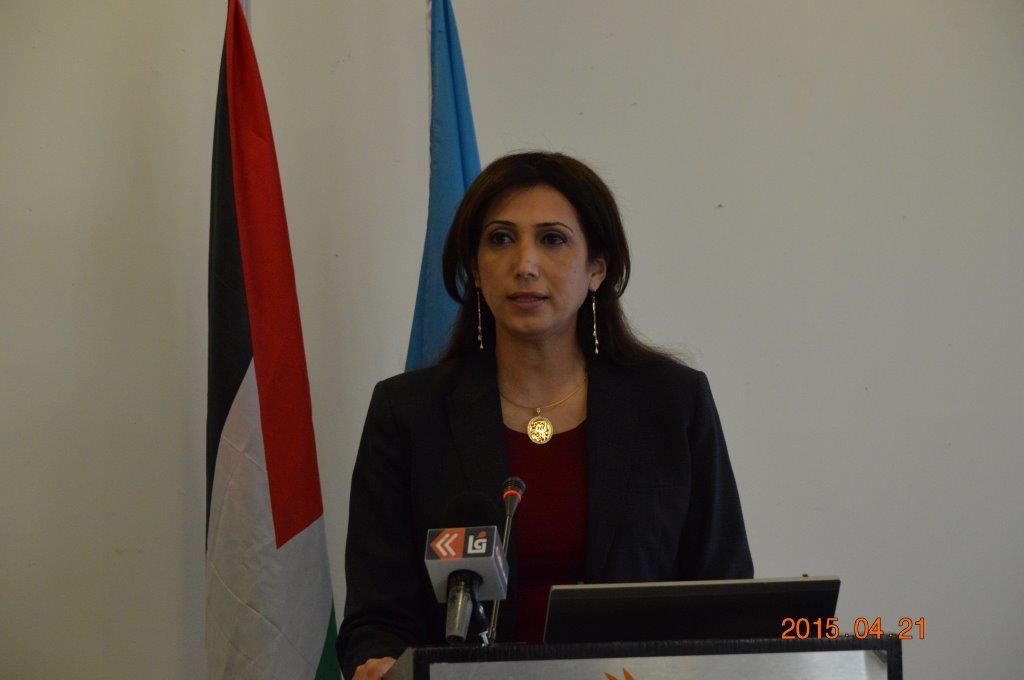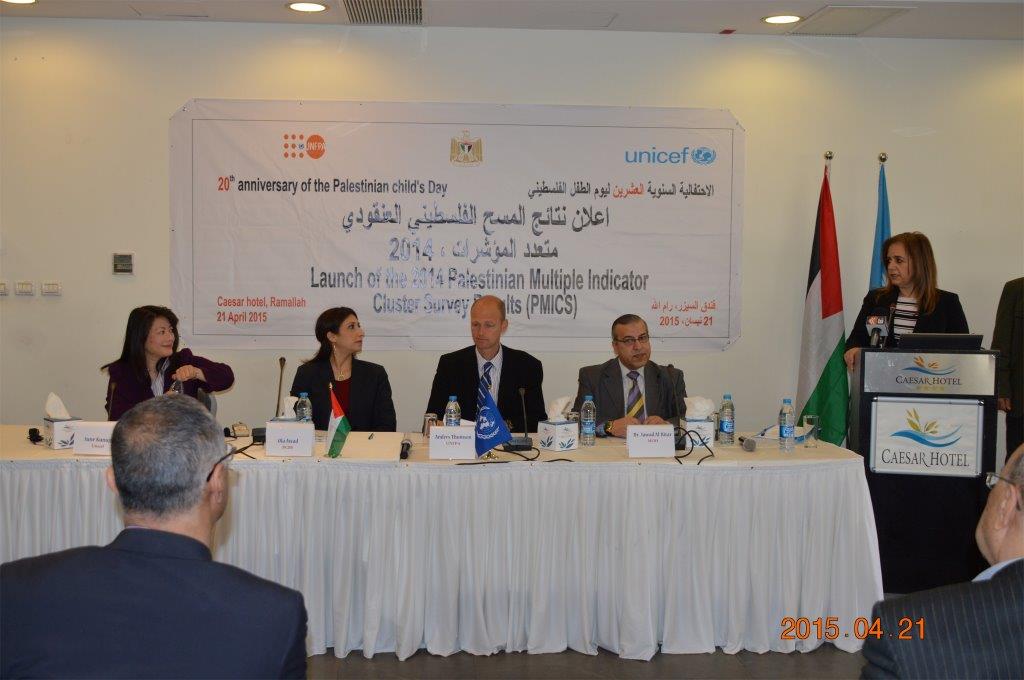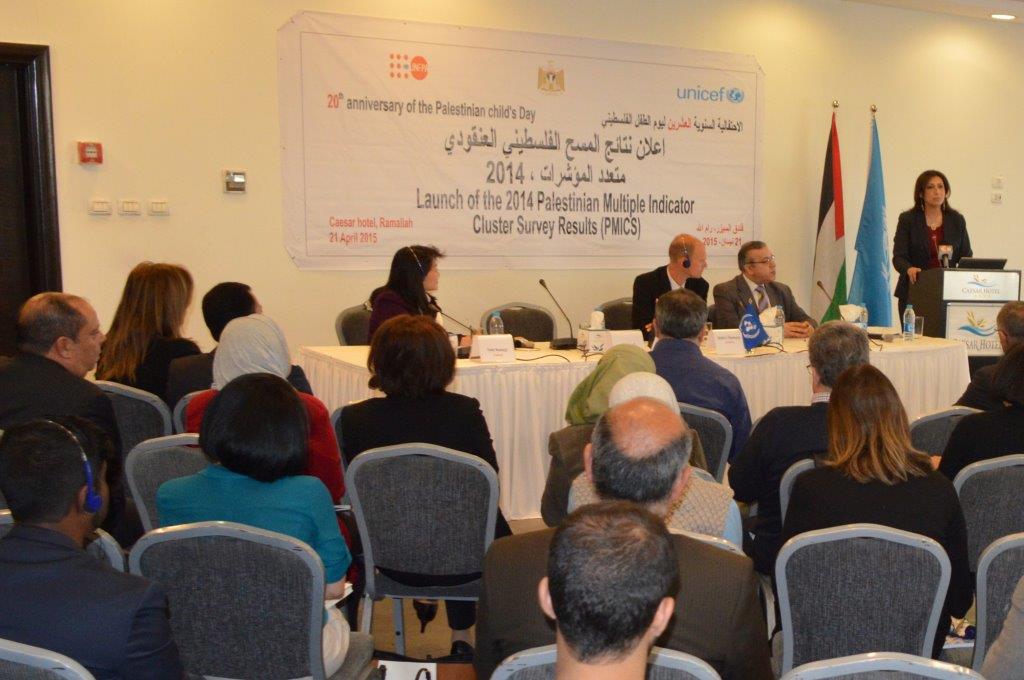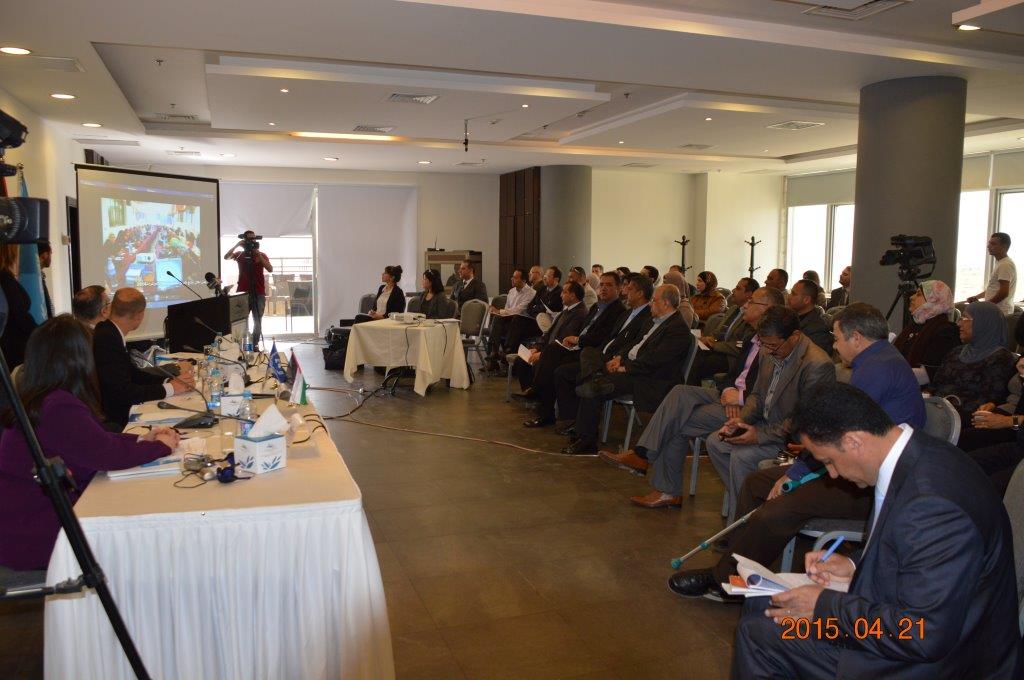|
Palestinian Multiple Indicator Cluster Survey 2014 Main Findings
The Palestinian Multiple Indicator Cluster Survey (MICS) was carried out in 2014 by Palestinian Central Bureau of Statistics. Technical support was provided by the United Nations Children’s Fund (UNICEF). The survey was financially supported by the Palestinian National Authority (PNA), UNICEF and UNFPA. The global MICS programme was developed by UNICEF as an international household survey programme to collect internationally comparable data on a wide range of indicators on the situation of children and women.
Objectives To furnish data needed for monitoring progress toward goals established in the Millennium Declaration and other internationally agreed upon goals, as a basis for future action.
To contribute to the improvement of data and monitoring systems in Palestine and to strengthen technical expertise in the design, implementation, and analysis of such systems.
Methodology The survey was implemented in two phases: 1. Household Listing, carried out on 2013. 2. Main survey, conducted on March - April 2014.
Survey sample: 11,125 household. Response rate: 96.3%. |
|
|
Main Findings: Early childhood mortality The under-five mortality rate in Palestine was 22 per 1000 live births; 20 in the West Bank compared with 24 in Gaza Strip. On the other hand infant mortality rates in Palestine reached 18 per 1000 live births; 17 in the West Bank and 20 in Gaza Strip.
Malnutrition in Children Under Five Years 7.4% of children under the age of five in Palestine suffer from moderate and severe stunting. The percentage was 7.7% in the West Bank and 7.1% in Gaza Strip. Male children under five years suffer from moderate and severe stunting more than females: the rate was 8.1% for males and 6.6% for females.
1.4% of children under the age of five in Palestine suffer from moderate and severe underweight. The percentage was 1.5% in the West Bank and 1.3% in Gaza Strip. Male children under five years suffer from underweight more than females: the rate was 1.6% for males and 1.1% for females. 1.2% of children under the age of five in Palestine suffer from moderate and severe wasting. The percentage was 1.7% in the West Bank and 0.7% in Gaza Strip. The rate was 1.2% for both males and females.
96.6% of children aged 0-23 months in Palestine were breastfed: 95.8% in the West Bank and 97.6% in Gaza Strip. The data showed that 38.6% of children in the age 0-5 months were exclusively breastfed: this percentage was 40.6% in the West Bank and 36.4% in Gaza Strip.
Iodized Salt 73.2% of households in Palestine used salt, with at least 15 ppm of iodine; 69.3% in the West Bank and 79.7% in Gaza Strip.
Vaccinations
Improved drinking water sources 61.5% of household members in Palestine use safe drinking water source, this percentage is higher in the West Bank (96.8%) in comparison to Gaza Strip (10.4%). Gaza mainly depend on tanks as a source of drinking water (68%), which was considered as unsafe source for drinking water.
Use of improved sanitation 98.6% of household members using improved sanitation facilities which are not shared, and this percentage is was in the West Bank (98.8%) while (98.4%) in Gaza Strip.
Reproductive Health Total Fertility Rates The total fertility rate in Palestine was 4.1 births per woman, with 3.7 births in the West Bank and 4.5 births in Gaza Strip.The adolescent birth rate (Age-specific fertility rate for women age 15-19) in Palestine were 48 births per 1000 women; this percentage was higher in Gaza Strip and stood at 66 births per 1000 women compared to 35 births per 1000 women in the West Bank.
Use of family planning methods More than half of married women aged 15-49 years in Palestine used a family planning method (57.2%), with 59.8% in the West Bank and 53.4% in Gaza Strip.
Unmet Need Unmet need refer to women age 15-49 years who are currently married who are fecund and want to space their births or limit the number of children they have and who are not currently using contraception
The percentage in Palestine is 10.9% of currently married women, 6.3% for spacing and 4.6% for limitation. with 11.0% in the West Bank and 10.7% in Gaza Strip. Antenatal Care 95.5% of women aged 15-49 years received health care during pregnancy at least 4 times by a health care provider; 95.7% in the West Bank compared with 95.3% in Gaza Strip.Skilled attendant at delivery 99.6% of women aged 15-49 years were attended by skilled health personnel during their most recent live birth; 99.6% in the West Bank compared with 99.5% in Gaza Strip.
|
|
Close
Close
 عربي
عربي



